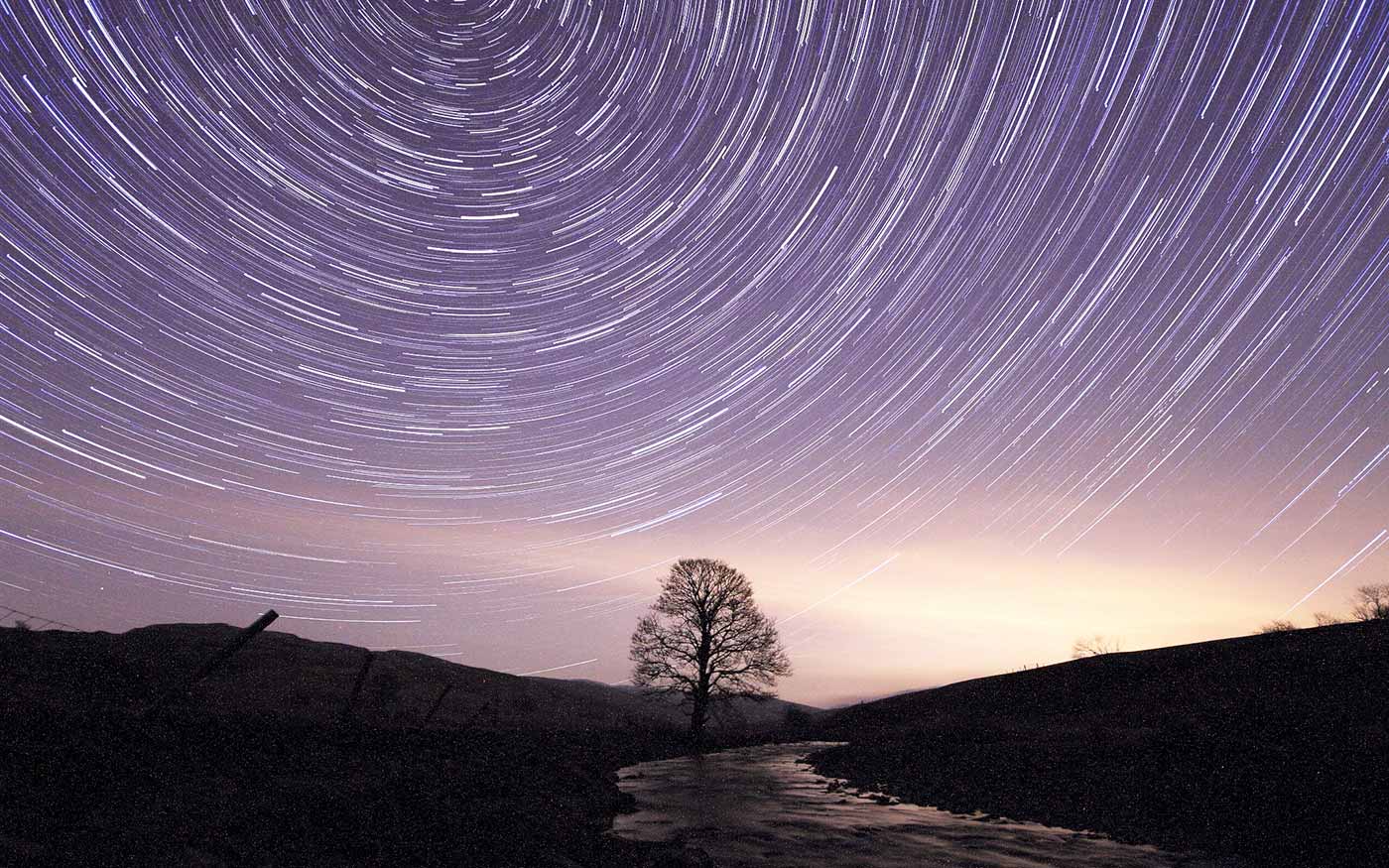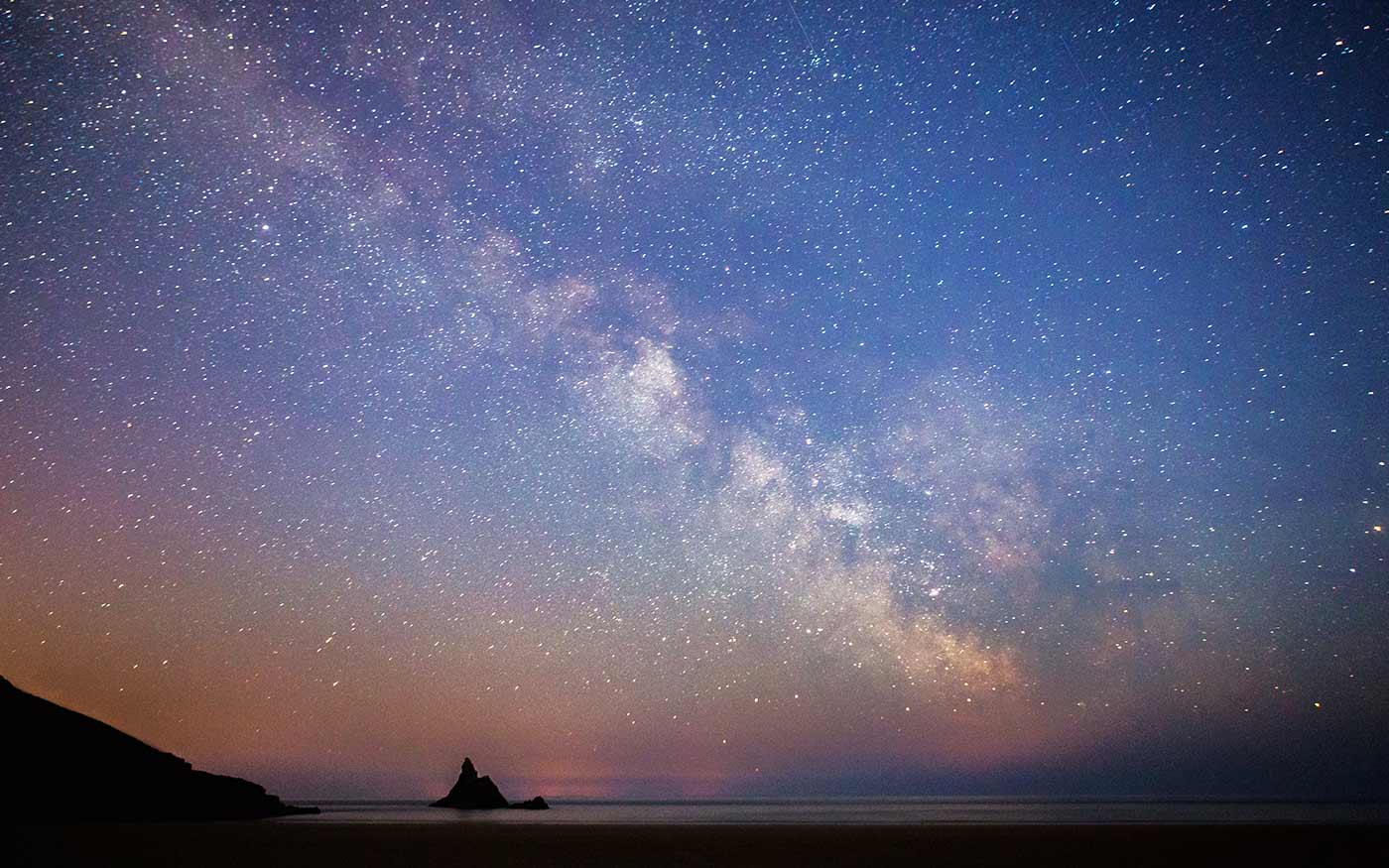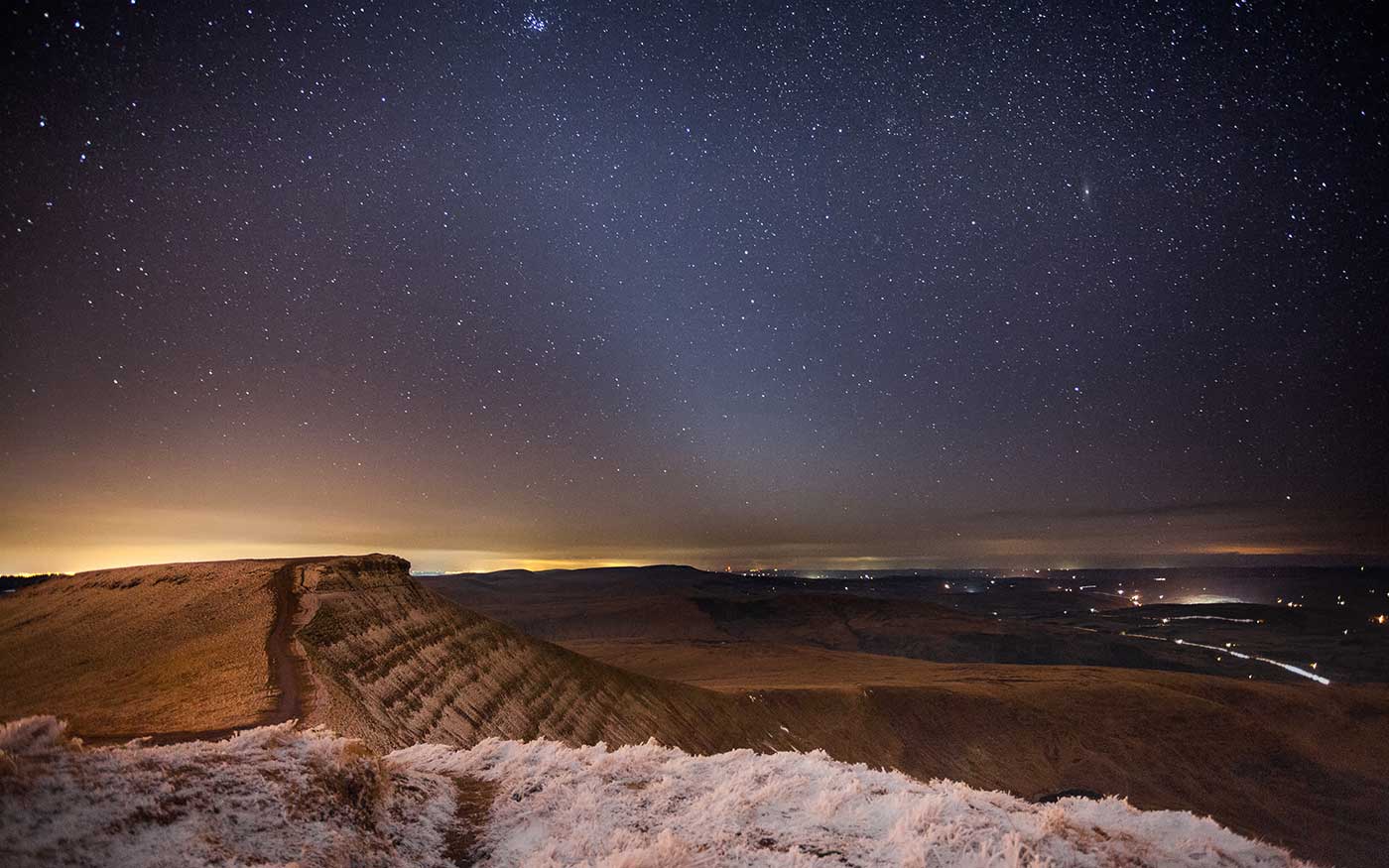Blog
Awyr Mis Medi
01.10.18
Saturday 1st: Mercury's (figure 1) 88 day orbit of the Sun will carry it to its closest point to the Sun (perihelion), a distance of 0.31 Astronomical Units (AU) from the Sun.
Astronomical Unit is the mean distance between the Sun and the Earth, it is equal to 149 597 870 km (92 955 806 miles).
Most of the planets, which follow almost exactly circular orbits around the Sun only varying in their distance from the Sun by a few percent, Mercury has a significantly elliptical orbit.
Mercury’s distance from the Sun varies between 0.307 AU at perihelion (closest distance to the Sun), and 0.467 AU at aphelion (furthest distance from the Sun). This variation means that Mercury’s surface receives over twice as much energy from the Sun at perihelion as compared to aphelion.

Figure 1. Mercury: Messenger image of Mercury. NASA
Mercury's telescopic appearance will show no significant difference, since little if any detail on its surface can be resolved by ground-based telescopes. Although its changing seasons have an incredible effect upon its surface temperatures, there is little change that is visible to amateur observers.
Mercury will be difficult to observe as it will appear no higher than 9° above the horizon. It will be visible in the dawn sky, rising at 4:53am (BST), 1 hour and 37 minutes before the Sun and reach an altitude of 9° above the eastern horizon before fading from view as dawn breaks at around 6:06am. It will be just over one degree from Regulus in Leo. On the 11th (approximately), Mercury will disappear into the Sun's glare as it moves towards superior conjunction (behind the Sun) on the 20th of the month.
Warning: Never attempt to view through binoculars or a telescope an object close to the Sun. Also, never attempt to view the Sun unaided, doing so may result in immediate and permanent blindness. Always use astronomical approved viewing equipment.
Jupiter (figure 2): Located West soon after sunset at the start of the month. Jupiter's equatorial bands, sometimes the Great Red Spot and up to four of its Galilean moons will be visible with a small telescope. Moving slowly eastwards in Libra during the month, Jupiter heads toward the southern part of the ecliptic and will only have an elevation of ~10 degrees after sunset. Atmospheric dispersion will thus hinder the view and it would be worth using an Atmospheric Dispersion Corrector to counteract effects.

Figure 2. Cassini image of Jupiter. Courtesy NASA.
Saturn (figure 3): visible in the south with elevation ~14 degrees after sunset during the start of September. Its brightness reduces as the month progresses. The rings were at their widest a few months ago and are still, at 25 degrees to the line of sight, well open and spanning ~2.5 times the size of Saturn's globe. Saturn, lying in Sagittarius, halts its retrograde motion on the 6th within a few degrees of M8 (Lagoon Nebula) and M20 (Trifid Nebula). Atmospheric dispersion will greatly obscure the view and, as for Jupiter, it would be worth using ZWO Atmospheric Dispersion Corrector (ADC) to counteract effects.

Figure 3. Saturn, courtesy, NASA.
Mars (figure 4 & 5): Ceased retrograde motion westwards in Capricornus (and just moving into Sagittarius) at the start of September made its closest approach to Earth since 2003 on July 30th/31st. Following sunset, Mars can be seen slightly east of south shining at a magnitude of -2.1 but falling to -1.3 by the end of September. Using a small telescope it should (see below) be possible to identify detail like Syrtis Major, on the salmon-pink surface. In the UK, it will reach an elevation ~14 degrees when due south and therefore the atmosphere will obscure the view. Use of a ZWO ADC would be a great advantage to viewing. In August the dust storm which obscured much of the surface since the end of June appears to be clearing and it is anticipated it will clear completely during September.

Figure 4. Close up view of Mars dust storm, July 2018, closest approach to Earth since 2003. Courtesy, NASA Hubble Space Telescope.

Figure 5. Curiosity Rover on Mars looks uphill at Mount Sharp. Image NASA.
Venus (figure 6 and 7): greatest elongation east on 17th August but now only seen low in the west southwest after sunset setting at approximately 80 (falling to 45) minutes after the Sun. The planet gets brighter, ranging from -4.6 to a glaring -4.8 magnitudes making it easier to see in the Sun's glare. Binoculars or small telescope may be required to identify it but remember do not use them until after the Sun has set (personal safety).

Figure 6. Radar image, showing surface features. Courtesy, NASA.

Figure 7. Picture of Venus taken by the Galileo space craft Solid State Imaging System from 1.7 million miles away. A high pass spatial filter was applied to emphasize the smaller scale cloud features, and the rendition has been colourised to a blue hue so to emphasise the subtle contrasts in the cloud markings and to indicate that it was taken through a violet filter. The sulfuric acid clouds indicate considerable convective activity, in the equatorial regions of the planet to the left and downwind of the subsolar point (afternoon on Venus). They are analogous to "fair weather clouds" on Earth. Courtesy NASA/JPL.
The Stars and Constellations in September (figure 8 & 9) |

Figure 8. Constellations seen toward south late evening. To south early evening moving to west during the night is the region of the Milky Way containing Cygnus and Lyra. Below is Aquilla. Three bright stars Deneb (in Cygnus), Vega (in Lyra) and Altair (in Aquila) make the "Summer Triangle". East of Cygnus is the great square of Pegasus - adjacent to Andromeda in which lies M31, Andromeda Nebula. To the north lies "w" shaped Cassiopeia and Perseus.Constellations in the South during early September, approximately 11pm, late September approximately 10pm.

Figure 9. Lyra and Cygnus.
During September the constellations Lyra and Cygnus can be seen almost overhead as darkness approaches with the bright stars Vega, in Lyra, and Deneb, in Cygnus, making up the "summer triangle" of bright stars with Altair in the constellation Aquila below (see chart above).
Lyra: dominated by its brightest star Vega, the fifth brightest star in the sky. A blue-white star which is 26 light years away. It has a mass three times more than the Sun and is approximately 50 times brighter. It is burning up its nuclear fuel at a greater rate than the Sun and will shine for a correspondingly shorter time. Vega is much younger than the Sun, only approximately a few hundred million years old, it is surrounded by a cold dark disc of dust in which an embryonic solar system is forming!
There is a double star called Epsilon Lyrae up and to the left of Vega. Binoculars will show them easily and you might see them both with the unaided eye. Using a telescope, providing calm atmosphere exists, shows that each of the two stars seen is a double star as well so it is called the double double (figure 10)!

Figure 10. Epsilon Lyra, the double double!
Between Beta and Gamma Lyra lies the Ring Nebula (figure 11). It is the 57th object in the Messier Catalogue and so is also called M57. These objects are called planetary nebulae because through a telescope they show a disc, similar to a planet. But they are the remnants of stars, similar to the Sun, that have reached the end of their life and have exploded off a shell of dust and gas around them. The Ring Nebula is similar to a colourful smoke ring through a small telescope, but is not as impressive as it is shown in photographs in which can be seen the faint central "white dwarf" star which is the core of the original star which has collapsed to approximately the size of Earth. It continues to shine very hot with a blue-white colour, but continues to cool down and eventually becomes a dark and invisible "black dwarf"! It is approximately 2300 light years from us.

Figure 11. M57: The Ring Nebula. Image: NASA and Hubble Space Telescope.
M56 (figure 12) is an 8th magnitude Globular Cluster visible through binoculars or telescope roughly half way between Alberio (the head of the Swan) and Gamma Lyrae. It is approximately 33,000 light years away and has a diameter of about 60 light years. It was originally seen by Charles Messier in 1779 and became entry number 56 into his catalogue.

Figure 12. M56 Globular cluster. Image, NASA.
Andromeda (figure 13): Stars of Andromeda arc up and to the left of the top left star of the square, Sirra or Alpha Andromedae. The most dramatic object in this constellation is M31, the Andromeda Nebula. It is a great spiral galaxy, similar to, but somewhat larger than, our galaxy and lies about 2.5 million light years from us. It can be seen with the unaided eye as a faint elliptical glow as long as the sky is reasonably clear and dark. Move up and to the left two stars from Sirra, these are Pi and Mu Andromedae. Then move your view through a right angle to the right of Mu by about one field of view of a pair of binoculars and you should be able to see it easily. M31 contains about twice as many stars as our own galaxy (Milky Way), and together they are the two largest members of our own Local Group of about 3 dozen galaxies.

Figure 13. The Andromeda Nebula, M31. Image NASA, HST.
M33 in Triangulum figure 14): Using an 8 by 40 binoculars or similar, you have seen M31 as described above, it might well be worth searching for M33 in Triangulum. Triangulum is the small faint constellation just below Andromeda. Start on M31, drop down to Mu Andromedae and keep on going in the same direction by the same distance as you have moved from M31 to Mu Andromedae. Under excellent viewing conditions (very dark and clear skies) you should be able to see what looks like a little piece of tissue paper stuck on the sky or a faint cloud. It appears to have uniform brightness and shows no structure. The shape is irregular in outline, not oval in shape and covers an area about twice the size of the Moon. It is said that it is just visible to the unaided eye, so it is the most distant object in the Universe that the eye can see. The distance is now thought to be approximately three Million light years - just greater than that of M31.

Figure 14. Tringulum Galaxy (M33). Image taken with amateur equipment.
Mark R Smith FRAS
Physicist
Nuclear Fusion & Astrophysics
Efallai y byddwch hefyd fod â diddordeb mewn...
Syllu ar y Sêr
Creuwch eich gwyliau 24/7 unigryw eich hun. Profwch anturiaethau epig o doriad gwawr tan y cyfnos yn nhawelwch, ysblander ac unigedd tirweddau rhyfeddol Cymru.
Gweithgareddau
Mae awyr dywyll rhyfeddol y Parciau Cenedlaethol yn darparu amgylchiadau perffaith er mwyn gwylio’r planedau, y lleuad a’r sêr gydol y flwyddyn.

Eryri
Parc Cenedlaethol Eryri yw'r ail ardal yng Nghymru i gael ei dynodi yn Warchodfa Awyr Dywyll Ryngwladol. Dim ond deuddeg o warchodfeydd o’r fath sydd yn y byd, ac ar noson glir yn Eryri gallwch weld y Llwybr Llaethog, yr holl brif gytserau, nifylau (cymylau llachar o nwy a llwch) a sêr gwib.

Arfordir Penfro
Mae gan Barc Cenedlaethol Arfordir Penfro fwclis o safleoedd darganfod awyr dywyll. Mae gan arfordir gwyllt a garw a chefn gwlad Sir Benfro fantais o rai o'r cyfleoedd awyr dywyll gorau yn y wlad, lle mae'n bosibl syllu ar y Llwybr Llaethog neu gytserau fel Orion gyda'r llygad noeth.

Bannau Brycheiniog
Parc Cenedlaethol Bannau Brycheiniog oedd yr ardal gyntaf yng Nghymru i ennill statws rhyngwladol Awyr Dywyll. Yn ymestyn o'r ffin â Lloegr i bellafoedd sir Gaerfyrddin ac o Gymoedd y De i’r Canolbarth, mae llawer o gyfleoedd i weld peth o'r awyr dywyllaf yn y DU yn ein tirwedd hardd ac amrywiol.

Project NOS
Creuwch eich gwyliau 24/7 unigryw eich hun. Profwch anturiaethau epig o doriad gwawr tan y cyfnos yn nhawelwch, ysblander ac unigedd tirweddau rhyfeddol Cymru.

Wythnos Awyr Dywyll Cymru
Creuwch eich gwyliau 24/7 unigryw eich hun. Profwch anturiaethau epig o doriad gwawr tan y cyfnos yn nhawelwch, ysblander ac unigedd tirweddau rhyfeddol Cymru.
